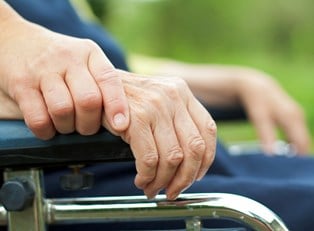In recent years, Parkinson’s disease has received increasing media attention as celebrities who are afflicted with this condition come forward to increase awareness and strive to make finding a cure possible. Some notable patients with Parkinson’s disease include actor Michael J. Fox, former U.S. Attorney General Janet Reno, former boxing champion Muhammad Ali, musician Linda Ronstadt, the late cartoonist Charles Schultz, and the late Pope John Paul II.
Parkinson’s disease is not a rare condition. Understanding the disease, its cause, and its symptoms can help you or a loved one to seek an accurate diagnosis.
Parkinson’s Disease Defined
Parkinson’s disease occurs when the brain stops producing adequate levels of dopamine, an important chemical that is essential for maintaining mobility and enhancing mood. The nerve cells in the portion of the brain that controls motor function, known as the basal ganglia, degenerate, and the symptoms progressively worsen. Parkinson’s disease typically strikes older individuals, but young adults can also develop the condition.
Causes and Risk Factors
The cause of Parkinson’s disease remains unknown. Mutations that can trigger Parkinson’s disease have been identified through genetic research. Toxin exposure may also trigger the onset of Parkinson’s disease. Some additional risk factors for Parkinson’s disease include the following:
- Parkinson’s disease occurs more frequently in males than in females.
- The chance for developing the disease increases with age.
- An individual with multiple family members who were stricken with the disease will have an increased risk.
Symptoms and Warning Signs
Parkinson’s disease is a degenerative condition. This means that it progresses, and symptoms worsen over time. Some early symptoms include stiff muscles, weakness or fatigue, difficulty walking or a tremor in the hands, arms or head.
As the disease progresses, patients experience any of the following signs.
- Muscles in the limbs become rigid due to their inability to relax.
- Tremors become more pronounced and spread to other regions of the body.
- Movements become slow and unpredictable as the brain fails to transmit messages to the parts of the body that are needed to carry out tasks or mobility.
- Changes in gait and carriage when walking include short, shuffling strides, loss of arm swings while walking and difficulty navigating around corners.
- The face takes on an expressionless, or masked, appearance.
Some other symptoms of Parkinson’s disease may include:
- Softer voice and slowed speech
- Slumped posture
- Loss of balance
- Falling
- Difficulty with everyday bodily functions, such as chewing, swallowing and urinating
- Memory loss
- Smaller handwriting
- Drooling
Diagnosis
Because many of the symptoms mentioned above are mimicked in a host of other health conditions, achieving a diagnosis of Parkinson’s disease can be challenging. If you experience any of the aforementioned symptoms, your physician may refer you to a neurologist for an evaluation.
There is no specific laboratory test that definitively confirms the presence of Parkinson’s disease. The method for diagnosing the disease may include tests to rule out other potential conditions that present with similar symptoms. Such tests may include diagnostic imagery, such as a CT scan or MRI. Extensive neurological function tests are also performed to evaluate reflexes, muscle coordination, and mental function. A complete medical history that details patient health status, familial health history, medication use, and lifestyle activities will be reviewed.
If the neurologist believes that you have Parkinson’s disease, he or she may prescribe a medication that is used in treatment. If your symptoms improve, then the diagnosis is confirmed.
Treatment
There is no cure for Parkinson’s disease, but the condition can be treated to improve quality of life for a longer duration. The primary goal of treatment is to replenish the level of dopamine. This can be achieved with oral medications, but their beneficial effects diminish over time. Medical research scientists are continually working hard to find the cure for Parkinson’s disease. Surgical procedures and injections to promote nerve cell growth in the brain and spinal cord are being explored as possible treatment options.
As patients weaken and become less able to participate in various activities, their social connections can suffer. Resulting depression is not an uncommon finding in patients with Parkinson’s disease. Physical therapy may be prescribed to help patients improve their motor functions and strengthen muscles so that they can continue to take part in some of their favorite pastimes. Support groups are valuable resources for social interaction and emotional health.



